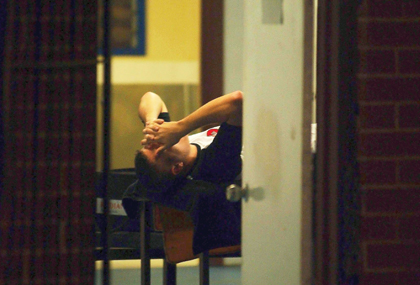
Sometimes pre-season involve a lot of rehab
I AM sure as coaches we have all pondered over pre-season training in the last few weeks – when should we start? How many nights a week do we do? How hard should we push the players early on? What sort of training should we do? When should we play our first game? The list of questions goes on.
Well consider this. A good pre-season in Gaelic football is absolutely critical to not only the footballer’s success, but also the team’s success. No matter how old or young or what level the player or team is playing at, you need some form of pre-season.
In addition to a good pre-season block of training, a really efficient strength and conditioning program will help prevent injuries, both short-term and long-term throughout the course of the season. If the programme is sufficiently managed and guided by an experienced strength and conditioning coach, you will reap the benefits.
I heard recently of a coaches from pub soccer teams criticising Gaelic teams for the length of time devoted to their pre-season. I can understand this ignorance, especially when you are involved in that mentality it can be mind baffling for you why Gaelic players are spending the guts of five months preparing for the start of their GAA season.
Don’t be confused though, a lot of this time is not actually pre-season but the off-season, which is just as important for the maintenance of fitness and what is now commonly known now as the pre-hab work.
Any Gaelic Footballer who now neglects the off season is going to put tremendous strain on an unprepared body once the pre-season training starts which, in turn, will result in early injuries and most injuries that occur early in the pre-season come from a neglected off-season.
Years ago it was common when your season ended in Gaelic football that you ‘wintered well’, put on a couple of stone and then spent the first eight weeks of pre-season suffering badly trying to shift the weight when realistically the players should not be arriving at pre-season training to get fit but arrive at pre-season training fit to train.
The big contentious debate among all coaches at present seems to be, when do you officially go back to training collectively for a club side? I don’t think there is a right or wrong answer, I personally feel it depends on the level you are competing at, for example, most division one clubs in Down now prepare as well as some of the lower level inter county squads – video analysis, GPS vests, nutritionists, physios, recovery drinks, strength and conditioning coaches, training weekends, even sports psychologists are all now common place in clubs seeking the holy grail (a senior championship).
So depending on what your club’s ambitions are or even you as a player, where your ambitions lie will probably determine how early or how late you go back to pre-season training.
My own experience, for what it’s worth, we like to progressively ease into our pre-season training.
For example pre-Christmas our players completed a lot of pre-hab work on their own which included a strength and conditioning programme which had the emphasis on movement over muscle which we completed the previous year and found it cut back on soft muscle tissue injuries by about 70% compared to the previous season.
In January now, we will train collectively once a week, in February we will increase that to twice a week and in March, four weeks before the commencement of the leagues, we will train collectively three times a week.
As I said, that’s just my own experience, other clubs will be different, they will be back now three times a week on the field pounding hard, and if that’s what works for them, then excellent.
Interestingly, the criticism that’s levelled at GAA teams at times for their commitment and dedication tends to come from outside the sport, but very seldom do you ever see the players refusing to do it.
I hear people talk about the fun going out of the game. This makes me chuckle, because I remember 15 years ago when I was playing and regularly running up mountains, round lakes and over sand dunes. Was that fun? Probably not, but no one walked away, we all loved it, we suffered but we loved it, when I look back, they were brilliant days.
Now it’s better than ever for players, training loads are monitored through GPS, players come to training and the ball is at the heart of everything they do, our first pitch session last week for example, we had 20 footballs and we used every one of them, the session was built around small-sided games, our players can’t wait until next week and neither can I.
Sure what else would we be doing in January?
Receive quality journalism wherever you are, on any device. Keep up to date from the comfort of your own home with a digital subscription.
Any time | Any place | Anywhere











